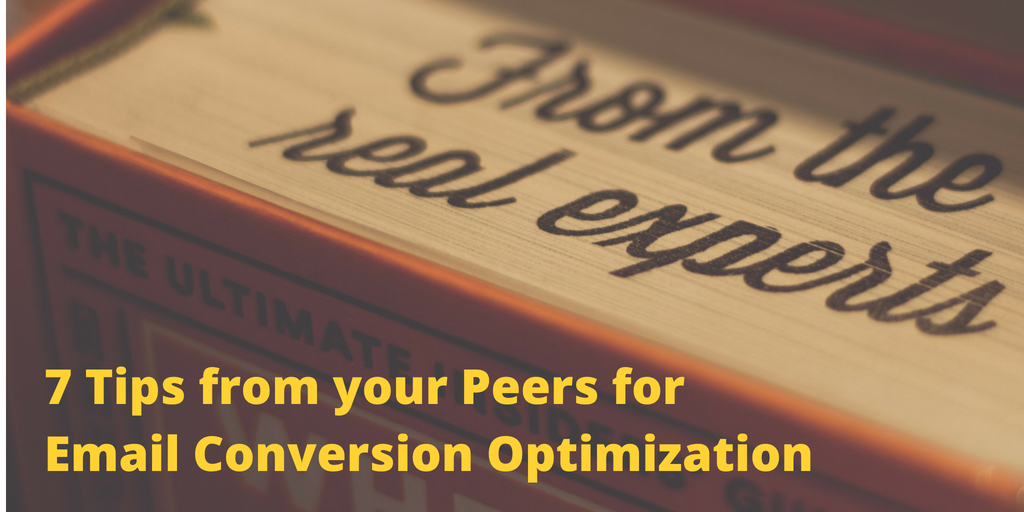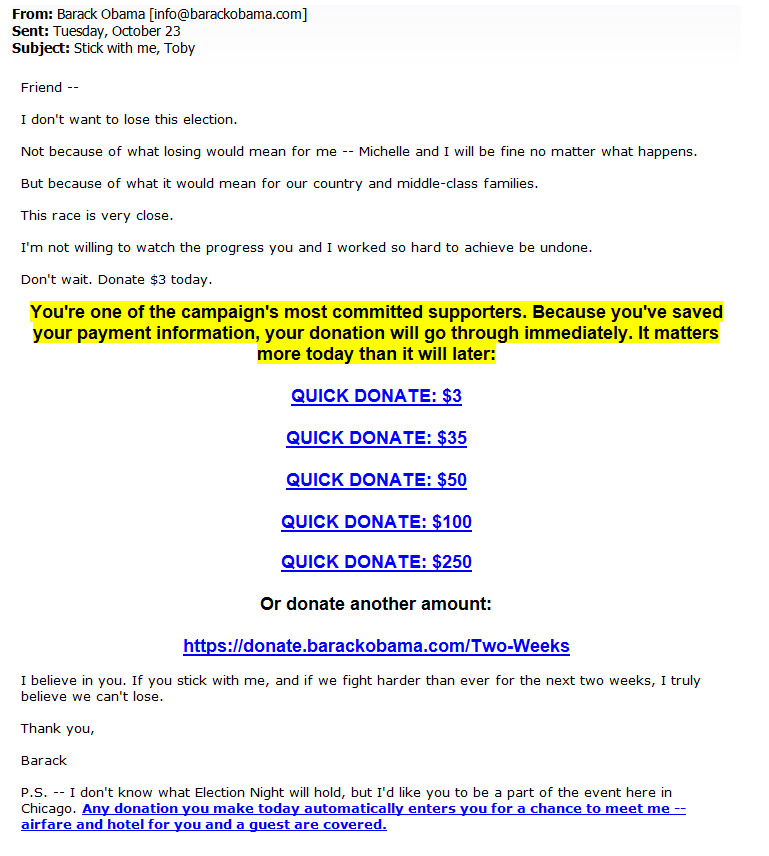Having written close to 1,000 emails for MarketingSherpa promoting our marketing products over the past few years, I’ve learned a couple of things I thought I would share with you, many of them from my own mistakes.
At Summits, when people recognize my name from their inbox, they ask, “What have you found that works?” What a loaded question, right?
I’ve felt much like Edison, but with a marketing spin on it. I have not failed, I’ve just found 10,000 ways on how to not write an email.
Much like you, my writing over time has evolved to include some semi-universal best practices which many of us are familiar with, but sometimes get lost in the marketing translation from company logic to customer logic. So, here is a quick refresher.
Tip #1. Write your copy with the understanding that your audience is likely not reading, but skimming
It’s been said most people are either “filers,” who create a specific file folder for each email, or “pilers,” who let the inbox pile up with no hope in sight. Either way, your message is up against an already overflowing inbox. Standing out – and quickly – is the only hope you have.
I’m not saying all email messages have to be short, but they should be readable in a skim format. Your audience should be able to understand the main message in five to 10 seconds. Subject lines should be point first or last, not middle. Intro paragraphs should also be short and lead into the body copy, usually three sentences or less. Overall, you should test your email subject lengths to know what your audience prefers to read.
Tip #2. Stop selling to your audience and offer real value
Nobody enjoys being bombarded with product offerings and specials. Don’t get me wrong, we all like a good deal, just not all of the time and not every day. Your emails should be an ongoing conversation and always offer real value. Ask yourself, “Does this pass the ‘so what’ test?” If not, then scrap what you have and start over.
Use benefit-focused language such as “Get” or “Receive” without making them think about all of the things they have to do. You need to build some trust with your audience and make sure you provide an email address so they can respond with feedback.
Tip #3. Clarity is the key
Have you ever read an email and not understood what they were trying to say? I know I have. From internal acronyms nobody outside the office understands to copy containing three or four calls-to-action, too much clutter is a conversion killer.
Focus on one key benefit, map it to their pain point and solve it. Your email tone should convey a helpful and friendly voice. Never use words that don’t convey value, like “Submit,” or “Click.” When possible, provide more clarity and quantify your message. For example, use “Get instant online access to all 32 marketing search journals” instead of “Download now.”
Read more…











